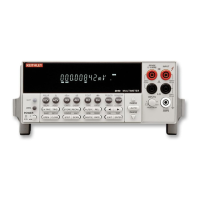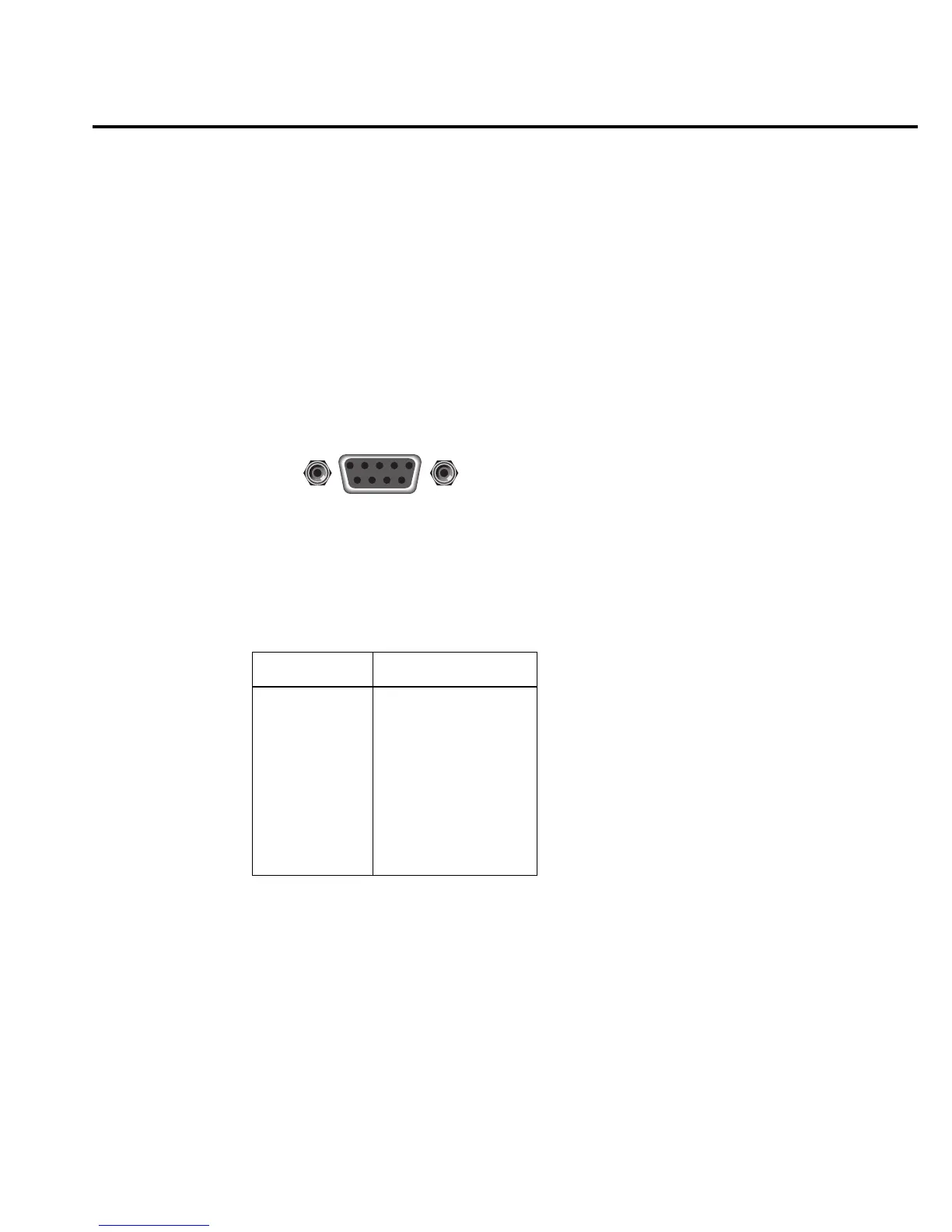RS-232 connections
The RS-232 serial port can be connected to the serial port of a controller (i.e., personal
computer) using a straight through RS-232 cable terminated with DB-9 connectors. Do not use
a null modem cable. The serial port uses the transmit (TXD), receive (RXD), and signal ground
(GND) lines of the RS-232 standard. It does not use the hardware handshaking lines CTS and
RTS. Figure 4-1 shows the rear panel connector for the RS-232 interface, and Table 4-2 shows
the pinout for the connector.
If your computer uses a DB-25 connector for the RS-232 interface, you will need a cable or
adapter with a DB-25 connector on one end and a DB-9 connector on the other, wired straight
through (not null modem).
Error messages
See Appendix B for RS-232 error messages.
Table 4-2
RS-232 connector pinout
Pin number Description
1
2
3
4
5
6
7
8
9
no connection
TXD, transmit data
RXD, receive data
no connection
GND, signal ground
no connection
CTS, clear to send
1
RTS, ready to send
1
no connection
1
CTS and RTS signals are not used.
Rear Panel Connector
54321
9876
RS232
gure
-
S-232 interface
connector
Remote Operation 4-7

